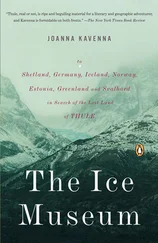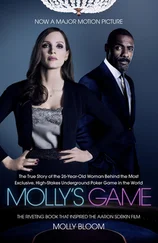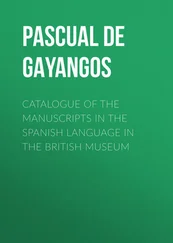As they turned the pages of the tome, Gene Cernan talked about how he had experienced Newton’s third law of motion – that every action has an equal and opposite reaction – first hand, in space. When he flew on Gemini 9, he had to assemble a backpack in zero gravity, with little light, outside the spacecraft. Nothing was holding him anywhere, so as he tightened a valve, his entire body span in the opposite direction. Everything he touched would touch him back and send him tumbling back out into space. When he touched the spacecraft, it repelled him. He had trouble getting back inside and when he finally made it his boots were filled with sweat.
From then on, NASA put hand and footholds on its space capsules so that the astronauts could anchor themselves in space. The astronauts were also trained in water so they could experience weightlessness. By the time Cernan flew to the moon with Harrison Schmitt, on Apollo 17, he knew how to get around without gravity.
When the Royal Society lent their fragment of Newton’s apple tree to NASA astronaut Piers Sellers to take up to the space station, they also sent along a picture of Sir Isaac Newton. The crew put it in the window of the space station so that Newton could look out: they thought he would have liked the view. Imagine what Newton might have come up with, if he’d had the chance to spend time up there with them, quietly looking around at the universe getting on with what it does, and figuring out how things work.

[Sir Isaac Newton (1643–1727)]Isaac Newton was born in Woolsthorpe, Lincolnshire. In the garden grew a Flower of Kent apple tree connected with the tale of Newton’s discovery of the law of gravitation – a story which Newton himself started.

[ Newton’s Apple Tree by Thomas Howison]If you look really closely you can see a ghostly figure of Sir Isaac Newton sitting on a branch of the fallen tree.

[Newton’s reflecting telescope]Newton sent a sketch of his Invention to the Royal Society. I saw it in their library. He included a sketch of his eye, looking down into the telescope. I was able to put my own eye to the telescope, just as he would have done centuries ago.

[Newton’s Principia ]The Royal Society has the original proof copy of Newton’s masterpiece Philosophiae Naturalis Principia Mathematica , down in the basement.
[Two pieces of Newton’s apple tree]A piece of the apple tree that inspired Newton was taken onto the space station, along with a photograph of Newton, below.
Imagine what Newton might have come up with, if he’d had the chance to spend time aboard the space station.
‘YOU COULD SAY THIS ENTIRE room is a hidden treasure,’ said the curator of the Linnean Society as the door swung open to their basement storage facility. She flicked the lights on to reveal a wood-panelled room lined with 1,600 books and drawers filled with 14,000 plants, 3,198 insects and 1,564 shells, which were the private collection of Carl Linnaeus, the man who named the natural world.
Carl von Linné (1707–78), who was born Carl Linnaeus, was a Swedish botanist. He standardized the system of scientifically naming plants with two Latin names, the genus (e.g. Ginkgo ), followed by the species (e.g. biloba ). This is called binomial nomenclature, and it is now used internationally for all plants and animals, even us humans. We are in the genus Homo and our species is sapiens , hence Homo sapiens , ‘the wise man’. Linnaeus came up with our name.
It’s a really clever system if you think about it, because anyone around the world can understand what plant or creature you are talking about. It’s essential for botanists, zoologists and museum curators caring for collections of specimens.
When a new species is discovered, scientists must explain to other scientists what it is and what it looks like. So the first thing they do is pick one member of the species as a holotype, or ‘type’, specimen. This is the example of the new species that will forever define it and is often the first example of the species found. Most of these ‘types’ are in museums around the world; thousands of them are in this room because Linnaeus gave them their scientific names.
There is not, as yet, a type for Homo sapiens . A palaeontologist named Edward Drinker Cope (1840–97) asked for the job in his will, but he turned out to have syphilis, so was struck off the list. Arnold Schwarzenegger has been proposed. Many say it ought to be Linnaeus, as he came up with the idea. His body is well preserved in the cathedral in Uppsala, Sweden, so there is a chance of this happening yet.
The specimens housed at the Linnean Society used to be in Uppsala, in Linnaeus’s home, where he lived with his family. When Linnaeus died, Joseph Banks (1747–1820) – the director of Kew Gardens and a passionate botanist – tried to buy the collection, but in the end a young student of his, James Edward Smith, bought it with money he borrowed from his father, and shipped the whole lot to London, where he founded the Linnean Society.
This is the cave of riches that I went to see. It is just inside the entrance to the Royal Academy of Arts. I met the librarian, Lynda Brooks, in the library, and we ventured downstairs to the basement, where the collection lives. She turned a key that opened a door into Linnaeus’s world.
The entire room smells like a lovely combination of old books and wood polish. The top shelves are filled with books Linnaeus wrote himself, and his reference books. The lower drawers and shelves are filled with thousands of insect, shell and plant specimens collected by him and by his ‘apostles’ – his students, who collected around the world for him. These men of science would also act as pastors, priests or doctors whilst on collecting expeditions.
We began with the plants. Linnaeus pressed each one carefully, described it and gave it a scientific name, and then stored it away. Later, these were parcelled up, so each plant is now a brown paper package tied up with green string, each one stacked upon another. We unwrapped one package and, inside, we found the type specimen for Delphinium . Two hundred and fifty years after Linnaeus named it Delphinium (after the Latin for ‘dolphin’, because of the shape its flower makes as it opens, like a dolphin leaping out of the waves), it is still a vivid blue colour because it has been kept in storage, out of the light. This is just one in his library of thousands of plants.
We also unwrapped what was for Linnaeus a very special flower, Linnaea borealis , which was named after him and became his signature flower. If ever you see a painting of him, look for the flower. He usually has it draped through his fingers. When alive, it is pink, and its delicate petals carpet the floor of woodland in Sweden. At night, the pink burns in the darkness. The type specimen in the archive has turned brown over the centuries, unlike the delphinium. Pink and red flowers lose their vibrancy more quickly than blue and yellow ones.
Читать дальше
















